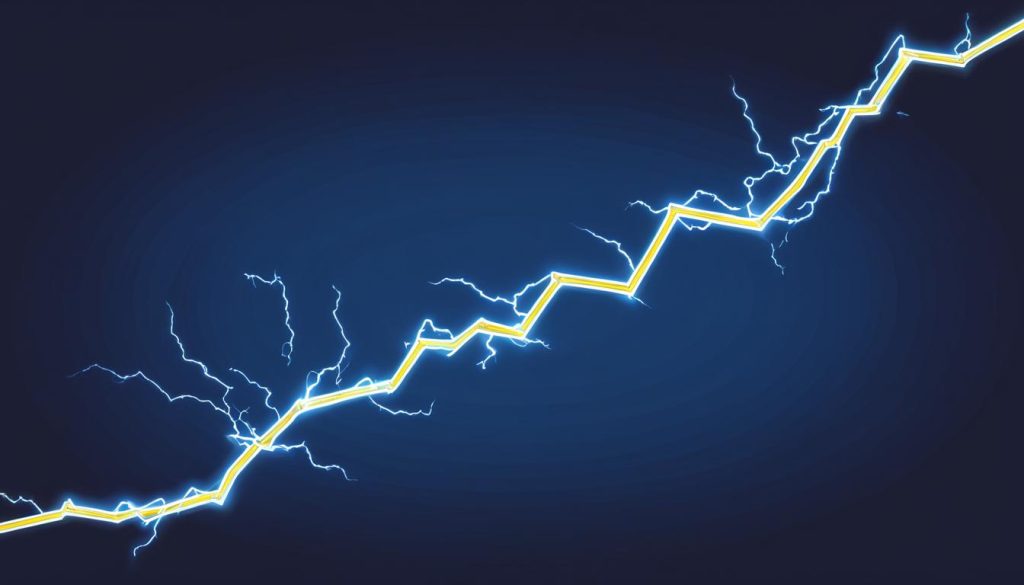Electricity Price Cap Impact on UK Households
Electricity prices have been a significant concern for UK households, with many struggling to keep up with the costs of energy bills. In response, regulatory bodies have implemented an electricity price cap to protect consumers from excessively high prices. The electricity price cap is a regulation that governs the maximum amount that suppliers can charge for electricity in the UK, ensuring that energy bills are more affordable for households. The cap is set by the UK government and reviewed every six months, taking into account factors such as wholesale prices, network costs, and supplier profits.
The electricity price cap has had a significant impact on households in the UK, with some seeing reduced energy bills as a result of the cap. However, there are also concerns that it may limit competition and innovation in the energy market and may not necessarily incentivize suppliers to invest in renewable energy and energy-efficient practices.
Key Takeaways
- The electricity price cap governs the maximum amount that suppliers can charge for electricity in the UK.
- It is set by the UK government and reviewed every six months.
- The cap aims to protect consumers from excessively high energy bills.
- It has had a mixed impact on households, with some seeing reduced energy bills but other concerns remain.
- The cap may not necessarily incentivize suppliers to invest in renewable energy and energy-efficient practices.
How Does the Electricity Price Cap Work?
The electricity price cap is a government-mandated limit on the amount that energy suppliers can charge their customers for electricity. It is a measure to regulate electricity prices and protect consumers from excessively high energy bills. In this section, we will explore the mechanisms behind the energy price cap and its impact on the energy market.
The Role of Regulatory Bodies in Setting the Energy Price Cap
The energy price cap is set by the Office of Gas and Electricity Markets (Ofgem), which is a non-ministerial government department responsible for protecting the interests of energy consumers. Ofcom uses a formula to calculate the energy price cap based on a variety of factors, such as wholesale energy prices, network costs, policy costs, and supplier margins. The formula is reviewed every six months to reflect changes in market conditions and ensure that prices remain fair.
Factors Considered When Determining Prices
The energy price cap is based on a range of factors, including the costs of supplying electricity, the wholesale cost of energy, policy and environmental costs, as well as supplier profits and overheads. These factors are used to calculate a maximum price that suppliers can charge for each unit of energy they supply, also known as a tariff. The cap only applies to standard variable tariffs, which are the default tariffs offered by energy suppliers.
Impact on the Energy Market and Consumers
The energy price cap has had significant effects on the energy market and consumers. It promotes competition between suppliers and ensures that customers on standard variable tariffs are not overcharged. However, the cap has also been criticized for limiting the ability of energy companies to offer competitive prices. Some critics argue that the cap could result in higher prices in the long term, as suppliers may be less inclined to offer competitive deals.
Benefits and Potential Drawbacks of Having a Price Cap in Place
The energy price cap has several benefits for consumers, such as protecting vulnerable households from high energy bills, promoting transparency in the energy market, and encouraging energy efficiency. However, there are also potential drawbacks to having a price cap in place, such as limiting price competition and reducing investment in the energy sector. The government and Ofgem must carefully balance the benefits of the energy price cap with the potential drawbacks to ensure that consumers are protected while also promoting a fair and competitive energy market.

Implications for UK Households
With the implementation of the electricity price cap, UK households have experienced some significant changes in their monthly energy bills. The cap has directly impacted households by setting a limit on the amount of money that energy suppliers can charge for electricity and gas.
One of the primary implications of the electricity price cap is cost savings for UK households. By putting a limit on the amount of money suppliers can charge for electricity, the cap has resulted in reduced energy bills for many consumers across the country. This has especially helped vulnerable customers, such as low-income households, who may struggle to meet their energy bills each month.
Alongside reduced bills, the price cap has also led to changes in consumer behaviour. Consumers are more likely to switch suppliers to find the best deals, and energy suppliers are now competing to provide the most competitive tariffs. This increased competition will hopefully drive suppliers to be more innovative in their energy offering, promoting renewable energy, and energy-efficient practices.
Challenges and Limitations of the Price Cap
While the electricity price cap has significant benefits for UK households, there are also concerns surrounding potential limitations and challenges it may present. One of the most significant concerns is that the price cap may impact the investment and innovation in the energy market. Suppliers may find themselves at a loss if they cannot keep up with the competition while adhering to the price cap standards. Another point of concern is that the price cap may not take into account regional variations in energy prices, leading to an uneven distribution of savings across the UK.
Furthermore, the cap may have negligible effects on promoting energy-efficient practices if consumers do not switch suppliers or change their energy consumption behaviours. Therefore, it is crucial to monitor whether the price cap is as effective as it was intended to be and consider potential risk mitigation strategies if necessary.

“While the electricity price cap offers cost savings for UK households, it presents potential challenges to innovation and investment in the energy market.”
Conclusion
The electricity price cap has been a significant policy intervention in the UK energy market, aimed at reducing prices and promoting affordability for households. However, its effectiveness remains a topic of debate among stakeholders.
It is clear that the price cap has provided some relief to consumers, ensuring that electricity prices do not skyrocket and preventing overcharging from suppliers. Nevertheless, it has also been criticized for limiting competition and stifling innovation in the energy sector.
Despite these concerns, the electricity price cap remains a crucial aspect of energy pricing regulation in the UK, alongside other measures such as switching incentives and smart metering. Moving forward, policymakers and consumers alike will need to carefully balance the benefits and drawbacks of having a price cap in place, weighing up affordability against market competitiveness and innovation.
Overall, the electricity price cap has had a significant impact on UK households and remains an important policy tool for regulating the energy market. As energy prices continue to be a pressing issue for consumers and policymakers, it is likely that the debate around the price cap will continue for some time to come.
FAQ
What is the electricity price cap?
The electricity price cap is a regulatory measure that limits the amount energy suppliers can charge for domestic electricity. It aims to ensure fair pricing, protect consumers from overpaying, and increase affordability.
How is the electricity price cap implemented?
The energy price cap is set and enforced by Ofgem, the UK’s regulatory authority for gas and electricity markets. Ofgem reviews and adjusts the cap twice a year, taking into account various factors such as wholesale energy costs, network charges, and policy costs.
What are the benefits of the electricity price cap?
The price cap on electricity offers several benefits for UK households. It provides protection against excessive price hikes, increases transparency in the energy market, encourages fair competition among suppliers, and promotes consumer trust and confidence.
Does the electricity price cap guarantee lower bills for consumers?
While the electricity price cap aims to ensure fair pricing, it does not guarantee lower bills for consumers. The cap sets a maximum limit on prices, but individual bills can still vary based on factors such as energy usage, tariff type, and supplier choice.
How does the electricity price cap affect energy suppliers?
The price cap places limits on the revenues that energy suppliers can generate from domestic customers. This can impact suppliers’ profitability and financial sustainability, potentially leading to changes in pricing structures, tariff offerings, and business strategies.
Are there any exemptions to the electricity price cap?
The electricity price cap does not apply to all tariffs. It primarily covers standard variable tariffs and default tariffs. Fixed-term tariffs, green tariffs, and certain other specialized tariffs may be exempt from the price cap.
Can consumers switch suppliers under the electricity price cap?
Yes, consumers can still switch energy suppliers even with the price cap in place. Switching suppliers allows consumers to explore more competitive deals, potentially resulting in lower energy bills or better service.
Does the electricity price cap impact renewable energy incentives?
The electricity price cap does not directly impact renewable energy incentives. However, it may indirectly influence the profitability of renewable energy projects and investment in the sector, as it affects the revenues of energy suppliers.
How long will the electricity price cap be in effect?
The electricity price cap was introduced in January 2019 and is currently planned to remain in effect until the end of 2023. However, the government has the power to extend or amend the cap if deemed necessary for protecting consumers and maintaining market fairness.




